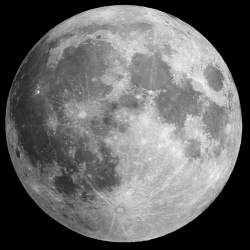
The study, performed by NexGen Space LLC and partly funded by NASA, concludes that the space agency could land humans on the Moon in the next five to seven years, build a permanent base 10 to 12 years after that, and do it all within the existing budget for human spaceflight.
The way for NASA to do this is to adopt the same practice that it’s using for resupplying the International Space Station (and will eventually use for crew transport), public-private partnerships with companies like SpaceX, Orbital ATK, or the United Launch Alliance.
NASA can cut the cost of establishing a human presence on the Moon "by a factor of 10," according to Charles Miller, NexGen president and the study’s principal investigator. Savings of that magnitude would allow NASA to expand its ambitions for lunar exploration without reaching beyond the almost $4 billion per year it receives for human spaceflight.
The NexGen study references SpaceX’s ISS resupply costs as an example of where these savings will come from. SpaceX currently charges NASA about $4,750 for every kilogram sent to orbit aboard its Falcon 9 rocket, far less than the price of the Apollo-era Saturn V ($46,000 per kilogram) or even the space shuttle ($60,000 per kilogram). While the study does use SpaceX’s next generation rocket, the Falcon Heavy, as an example in its plans to get to the moon, SpaceX claims the Falcon Heavy will be as cheap or cheaper per kilogram than the Falcon 9.
This Evolvable Lunar Architecture plan would also stir a new economy by mining the Moon for hydrogen in the polar water ice. The hydrogen would be processed and turned into cryogenic propellant, which would be stored in a propellant depot craft which orbits the Moon. That fuel would be sold to NASA or others looking for a way to fuel up for a trip to Mars. "You basically expand free enterprise to the Moon," Miller says.
This is not new money NASA would have to spend. It is instead a readjustment. NASA is already planning to go back to the Moon with its next-generation rocket, the Space Launch System (SLS), but there are no plans to land. By using commercial partners, NASA could reduce the number of planned SLS launches from 12 to around three, reducing the cost of the program while still developing the technologies necessary to support it.
The NexGen study lays out a detailed roadmap for when and how to take the next step of performing a landing. A robotic return to the Moon could happen as soon as 2017, if NASA were to adopt the plan right away. Rovers would scout the lunar poles for hydrogen in 2018, and prospecting could begin by 2019 or 2020. Robotic construction of a permanent base would begin in 2021 in anticipation of landing humans on the Moon later that year.
